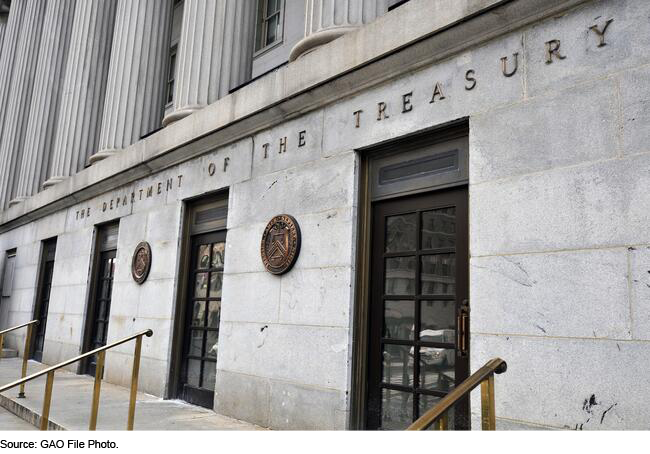Troubled Asset Relief Program: Status of Two Remaining Active Investment Programs
Fast Facts
The Treasury Department's Troubled Asset Relief Program was a response to the 2007-2009 financial crisis. Treasury used TARP to distribute hundreds of billions of dollars in assistance to financial institutions and others.
TARP had 2 investment programs left as of Sept. 30, 2021.
- The Capital Purchase Program, in which Treasury traded assistance to banks for stock, has received about $227 billion in repayments and income. It has made about $22 billion more than it disbursed.
- The Community Development Capital Initiative, which helped financial institutions in underserved areas, has received $592 million. It has made about $22 million.

Highlights
What GAO Found
As of September 30, 2021, three participants remained in the Troubled Asset Relief Program's (TARP) two active investment programs. Those participants included one institution in the Capital Purchase Program (CPP) and two institutions in the Community Development Capital Initiative (CDCI). Combined, the Department of the Treasury's (Treasury) total investment for these programs was $205.10 billion. By the end of September 2021, Treasury had received $227.36 billion in proceeds (repayments and income). As of that date, outstanding investments totaled about $13 million.
- Treasury's total investment for the CPP program has been $204.90 billion; by December 2009, Treasury had disbursed all funds to 707 financial institutions nationwide. As of September 30, 2021, Treasury had received $226.77 billion in repayments and income from its CPP investments and sales of original CPP investments. The remaining outstanding investment balance for CPP is about $12 million and one institution remained in the program, as of September 30, 2021.
- Treasury's total investment for the CDCI program has been $570 million for 84 institutions. Of the total investment, Treasury disbursed $207 million through CDCI from July through September 2010. An additional $363 million represented exchanges of investments from CPP into CDCI. As of September 30, 2021, Treasury had received $593 million in repayments and income from CDCI participants. The remaining outstanding investment balance is about $1 million and two institutions remained in the program, as of September 30, 2021.
Why GAO Did This Study
The Emergency Economic Stabilization Act of 2008, as amended, included a provision that GAO report at least annually on TARP activities and performance. As a result, GAO has been monitoring, analyzing, and providing updates on TARP programs since 2008. This report provides an update on the status of Treasury's investment and participation in the remaining TARP investment programs, as of September 30, 2021. This includes CPP, which was designed to provide capital to financially viable financial institutions through the purchase of senior preferred shares that would pay dividends and warrants to purchase shares of common or preferred stock, and CDCI, which was designed to provide capital to Community Development Financial Institutions by purchasing preferred shares and subordinated debentures.
To assess the programs' status, GAO reviewed Treasury reports on the status of CPP and CDCI. In addition, GAO reviewed information from Treasury officials to identify the agency's current efforts to exit from outstanding investments made under these programs. Finally, GAO used financial and regulatory data to assess the financial condition of institutions remaining in the programs and those that had left the programs.
For more information, contact John Pendleton at (202) 512-8678 or pendletonj@gao.gov.
